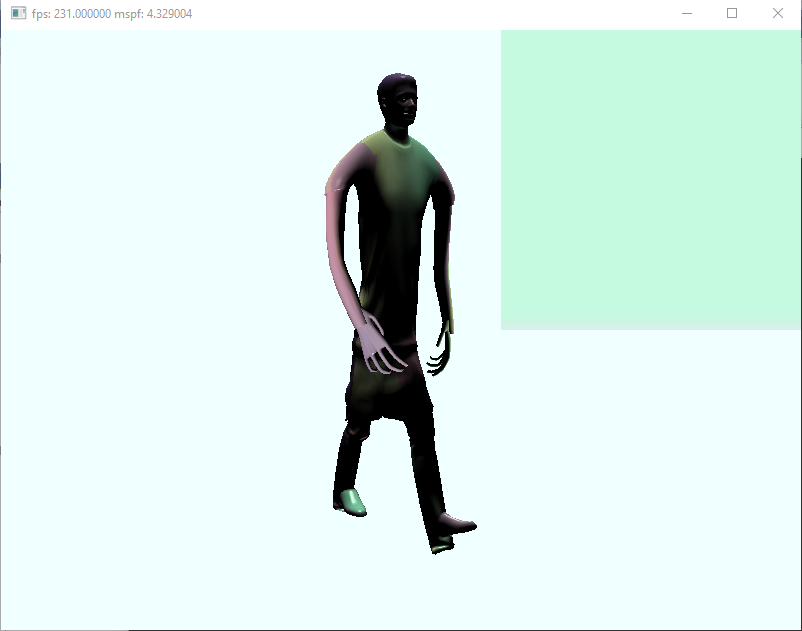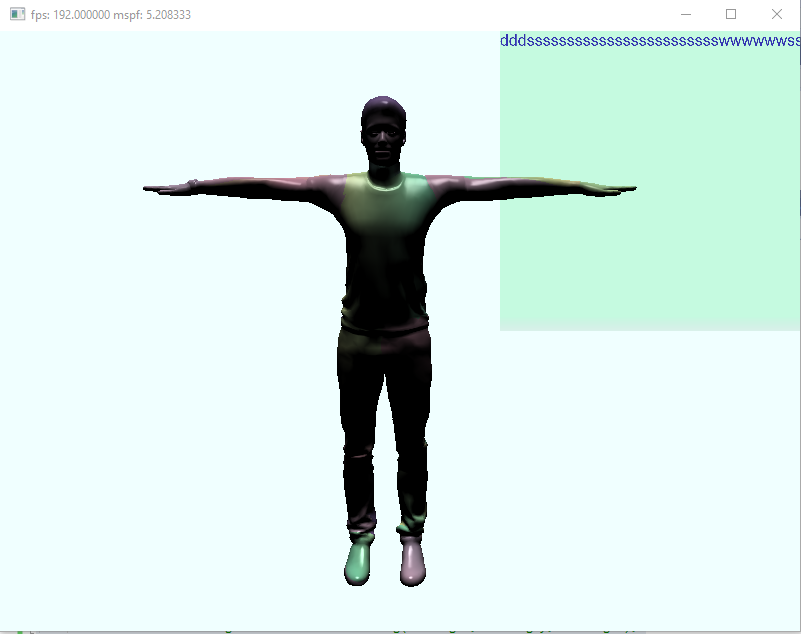Hello I been struggling to figure out how to implement skeleton animations using Assimp
I been following openGl tutorial: http://ogldev.atspace.co.uk/www/tutorial38/tutorial38.html
Any help greatly appreciated.
Loading Bones:
void AssimpLoader::LoadBones(aiMesh* mesh)
{
bones.resize(mesh->mNumVertices);
for (int i = 0; i < mesh->mNumBones; i++)
{
int BoneIndex = 0;
std::string BoneName(mesh->mBones[i]->mName.data);
if (mBoneMapping.find(BoneName) == mBoneMapping.end())
{
BoneIndex = mNumBones;
mNumBones++;
BoneInfo bi;
mBoneInfos.push_back(bi);
}
else
{
BoneIndex = mBoneMapping[BoneName];
}
aiTransposeMatrix4(&mesh->mBones[i]->mOffsetMatrix);
mBoneInfos[BoneIndex].boneOffset = Utility::aiMtoxmM((mesh->mBones[i]->mOffsetMatrix));
mBoneMapping[BoneName] = BoneIndex;
for (int x = 0; x < mesh->mBones[i]->mNumWeights; x++)
{
int VertexID = mesh->mBones[i]->mWeights[x].mVertexId;
float Weight = mesh->mBones[i]->mWeights[x].mWeight;
bones[VertexID].AddBoneData(BoneIndex, Weight);
}
}
} void ReadNodeHeirachy(float animationTime, const aiNode* pNode, const XMFLOAT4X4& parentTransform)
{
std::string nodeName(pNode->mName.data);
const aiAnimation* pAnimation = scene->mAnimations[0];
XMFLOAT4X4 NT = Utility::aiMtoxmM(pNode->mTransformation);
XMMATRIX nodeTransform = XMLoadFloat4x4(&NT);
const aiNodeAnim* pNodeAnim = animNodes[nodeName];
if (pNodeAnim)
{
XMFLOAT3 Scaling;
CalcInterpolatedScaling(Scaling, animationTime, pNodeAnim);
XMMATRIX ScalingMatrix = XMMatrixScaling(Scaling.x, Scaling.y, Scaling.z);
aiQuaternion RotationQuat;
CalcInterpolatedRotation(RotationQuat, animationTime, pNodeAnim);
XMMATRIX RotationMatrix = XMMatrixRotationQuaternion(XMVectorSet(RotationQuat.x, RotationQuat.y, RotationQuat.z, RotationQuat.w));
XMFLOAT3 Position;
CalcInterpolatedPosition(Position, animationTime, pNodeAnim);
XMMATRIX PositionMatrix = XMMatrixTranslation(Position.x, Position.y, Position.z);
XMVECTOR zero = XMVectorSet(0.0f, 0.0f, 0.0f, 1.0f);
nodeTransform = ScalingMatrix * RotationMatrix * PositionMatrix;
}
XMMATRIX globalTransf = nodeTransform * XMLoadFloat4x4(&parentTransform);
if (mBoneMapping.find(nodeName) != mBoneMapping.end())
{
int BoneIndex = mBoneMapping[nodeName];
XMMATRIX boneoffset = XMLoadFloat4x4(&mBoneInfos[BoneIndex].boneOffset);
XMMATRIX finaltransf = boneoffset * globalTransf;
XMStoreFloat4x4(&mBoneInfos[BoneIndex].FinalTransform,XMMatrixTranspose(finaltransf));
}
for (UINT i = 0; i < pNode->mNumChildren; i++)
{
XMFLOAT4X4 GT; XMStoreFloat4x4(>, globalTransf);
ReadNodeHeirachy(animationTime, pNode->mChildren[i], GT);
}
}





